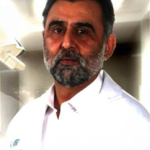10 Best Cancer Hospitals in USA 2024
There are many types of cancer treatments available. The type of treatment you receive depends on the type of cancer you have and how advanced it is. Some people with cancer receive only one treatment. However, most people combine treatments such as surgery with chemotherapy or radiation therapy. You can also get immunotherapy, targeted therapy, or hormone therapy. Clinical trials may also be your option. Clinical research is research that involves humans. Knowing what they are and how they work will help you decide if participating in a study is a good option for you.
1. Anderson Cancer Center – University of Texas MD
MD Anderson Cancer Center, located in Houston, Texas, has more than 19,000 employees dedicated to cancer treatment and is a leader in the application and innovation of medical technology. As a teaching hospital with one of the country’s largest cancer prevention programs, the center is known and respected for its rapid transformation of scientific research into improved cancer treatment and prevention methods. MD Anderson has an Innovation Center where creative thinkers from different disciplines work with researchers, clinicians and patients to create digital health technology products and services to improve cancer care and prevention. And developing. Other technology-based programs include MD Anderson Oncology Expert Advisor, a cognitive computing-based decision support platform, and detailed analysis of patient information for more accurate care and state-of-the-art clinical trials. Includes Personalized Cancer Treatment Laboratory.
2. Mayo Clinic
Mayo Clinic is the second high-tech hospital in the United States. The Mayo Clinic Cancer Center is the former largest campus in Rochester, Minnesota, treating more than 100,000 cancer patients each year. As a world-renowned teaching hospital, the Mayo Clinic pioneered the use of electronic health records to improve patient care and research. With extensive medical research, Mayo Clinic scientists have discovered the key research behind proton therapy. This allows radiation oncologists to target and destroy cancer cells while protecting healthy tissue. Mayo Clinic’s latest innovation is a technology platform that supports human decision making within existing clinical workflows to assist in diagnosis and care. It is known as the Remote Diagnostics and Management Platform (RDMP).
3. Dana-Farber Cancer Institute
The Dana-Farber Cancer Institute is the third high-tech cancer clinic in the United States. As part of a collaborative study with the Harvard Cancer Center, the Dana-Farber Cancer Institute was founded in 1947 by Dr Ph, the father of modern chemotherapy. Established Sidney Farber. To train future clinical and scientific leaders in cancer treatment, the institute focuses on both empathetic patient treatment and facilitating an understanding of the underlying causes of cancer. The Dana-Farber / Boston Children’s Cancer and Blood Disorders Center was sponsored by the United States. The News & World Report has also nominated the country’s second-largest childhood cancer program. The Institute’s current research areas include lung cancer, breast cancer, skin cancer, stem cell transplantation, and clinical cancer through specific innovative projects incorporating advanced technology in the form of human antibody engineering platforms and lung cancer gene modifications. Includes research.
4. Johns Hopkins
Johns Hopkins is the fourth-largest high-tech cancer clinic in the United States. The Sidney Kimmel Comprehensive Cancer Center at Johns Hopkins has paved the way for nearly 50 years in improving the scientific understanding of cancer mechanisms and developing new therapies. Recent technical achievements at Johns Hopkins include the establishment of the award-winning Coronavirus Resource Center. The centre aggregates and analyzes data on COVID 19 cases and provides testing and real-time contact tracking to help healthcare professionals, policymakers, and the global public respond to pandemics. to support. Researchers at Johns Hopkins have recently developed innovative new software that can reduce processing time from 15 days to 3 days for profiling gene mutations in DNA such as cancer.
5. Cleveland Clinic
The Cleveland Clinic is the fifth high-tech cancer clinic in the United States. To commemorate its 100th anniversary, the Cleveland Clinic recently announced a 10-year partnership with technology giant IBM to develop the Discovery Accelerator. The goal is to combine AI, cloud, and quantum computing skills with research activities to drive health care innovation. An annual medical innovation summit will usually be conducted by Cleveland Clinic Innovations from the development department for the medical facilities. This event was also hosted by the hospital. New research on the use of PARP inhibitors in the treatment of prostate cancer is recognized as one of the organization’s top 10 medical innovations in 2021.
6. Massachusetts General Hospital
Massachusetts General Hospital is the sixth high-tech cancer hospital in the United States. Founded in 1811, Mass General Brigham, a teaching hospital at Harvard Medical School, offers America’s largest hospital-based research program. The facility is a founding member of a consortium for improving medicine through innovation and technology. Presented as part of a list called the “Destructive Dozen” at the World Medical Innovation Forum, recent popular successes in digital health technology include streamlining the process of bone marrow stem cell recruitment and extraction.
7. Cedars Sinai Medical Center
Cedars-Sinai Medical Center is the 7th high-tech cancer clinic in the United States. Oncology specialists at the Cedars Sinai Medical Center treat more than 60 types of cancer. The largest single cancer treatment provider in California. The medical centre hosts several cancer research programs, including a determinant program for liver metastases. This is the only program in the country that focuses on the causes and possible treatments for liver metastases from prostate, pancreatic and colon cancers. A recent pilot program at Cedars Sinai has introduced the world’s first patient-centric voice assistant platform, known as Aiva, into the hospital room. The Alexa-powered platform was developed as part of the Cedars-Sinai Accelerator, allowing patients to interact with their caregivers hands-free.
8. Northwest Memorial Hospital
The Northwestern Memorial Hospital is the eighth high-tech cancer hospital in the United States. Fienberg School of Medicine at the Northwestern University’s teaching hospital is The Northwestern memorial hospital which is home to Robert H. Lurie Comprehensive Cancer Center. The hospital offers pioneering initiatives such as the Center for Cancer Nanotechnology Excellence and the OncoSET Precision Medicine Program. The OncoSET Precision Medicine Program uses genomic technology to identify effective individual cancer treatments. Northwestern is the first hospital in the United States to use a new AI-enhanced ultrasound technology called Caption AI in the Department of Cardiac-Oncology.
9. Seattle Cancer Care Alliance / University of Washington Medical Center
Seattle Cancer Care Alliance / University of Washington Medical Center is the 9th largest high-tech cancer clinic in the United States. The Seattle Cancer Care Alliance and the University of Washington Medical Center are members of a cancer consortium that includes the Fred Hutchinson Cancer Research Center and Seattle Children’s Hospital. Current research combining technology and medicine at SCCA that includes a project. This project is used for applying a natural language processing (NLP) model for creating personalized teaching materials to patients about the needle biopsy along with pathology reports.
10. UCSF Medical Center
The UCSF Medical Center is the 10th largest high-tech cancer clinic in the United States. Helen Diller Family Comprehensive Cancer Center, a newly built state-of-the-art facility at the University of California, San Francisco, leverages the pillars of precision medicine and population precision health for innovative research, treatment and patient care strategies. The University of California, San Francisco Cancer and Treatment Precision Imaging Program combines advanced AI data analysis techniques with new imaging techniques to better understand and document cancer progression and response to treatment.
Importance of cancer treatment:
The primary goal of cancer treatment is to cure, and second, to provide relief when cure is not possible due to advanced illness. Today, 30% of all cancers are cured daily. Treatment should be as durable as possible and quality of life should be acceptable. Symptom relief can occur after curative treatment, but if the cure is not possible, rapid sign relief is important. Treatment aimed at healing is “curative treatment”, and treatment given solely to relieve symptoms is “palliative”. Palliative care should be less intense than curative treatment and less prevalent than the disease itself.
When doctors work on treating cancer patients, they need a clear understanding of the purpose of the treatment before starting treatment. Significant short-term and long-term morbidity is acceptable if recovery is likely and the patient is reasonably healthy. It should be effective, should be completed in a short period, and its acute morbidity should be acceptable. It is also important for the physician to give the patient a clear explanation of the illness and provide realistic advice on the possible outcomes of treatment and the possible long-term and short-term morbidity. Patients can opt for “palliative” treatment, which is less likely to cure but has a higher quality of life, than accepting curative treatment with potentially high morbidity.
Final Thoughts:
Non-invasive radiation therapy may be less likely to recover, but this modality maintains anatomy and normal functioning and may be more acceptable to patients. In the treatment of end-stage cancer, the wise use of appropriate analgesics such as morphine in combination with steroids may prove to be more effective than high-tech or chemotherapy. With additional support from local medical facilities, patients can control their symptoms satisfactorily and often die comfortably at home.









